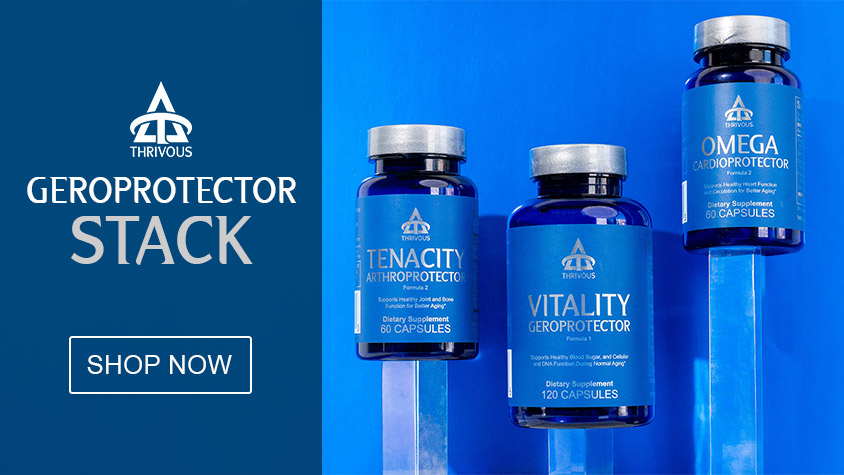New Evidence that Epigenetic Age May Be Reversed in Humans

Reverse aging? That sounds nice! An article in Nature discusses the TRIM study, which was small but exciting. Researchers gave nine participants a combination of the supplements DHEA, Vitamin D, and Zinc, the drug Metformin, and growth hormone. The researchers measured the participants' epigenetic age both before and after one year of treatment. To their surprise, the epigenetic ages of the participants were better than before starting the treatment!
In a previous article, I explained that epigenetic age is an indicator of how well DNA is maintaining healthy body function. Over time, changes in the expression of DNA cause changes throughout the body, such as reduced immune function. This study specifically found improvements in immune function.
In another previous article, I discussed some similarities between Metformin and the supplement Berberine, and their benefits.
Finally, in other supplement science news this week, we learn more about how Omega 3 may enhance our health and contribute to better aging.
Omega 3 may enhance emotional health. Omega-3 fatty acids for a better mental state in working populations - Happy Nurse Project: A 52-week randomized controlled trial. This study looked at potential benefits of Omega 3 supplements in the workplace. Researchers asked 80 female nurses in Japan to take a placebo or an Omega 3 supplement (1200 mg/day EPA and 600 mg/day DHA) for 13 weeks. Data was collected at weeks 13, 26, and 52. Supplementation stopped at week 13. At the end of the supplementation period, participants didn’t rate their job performance any different than previous to the study, but insomnia scores were better in the Omega 3 group. When extended out to 52 weeks, the Hospital Anxiety and Depression Scale (HADS) total score, anxiety score, and depression score were also improved in the Omega 3 group. Another study, a meta-analysis, showed that Omega 3 supplements needed to be over 2000 mg to affect anxiety scores. With some benefits showing at 1800 mg for 13 weeks, it would be interesting to me to see this study repeated with 2000 mg of Omega 3, supplemented each day for a longer period of time.
Different sources of Omega 3 have some similarities. [Effects of ω-3 polyunsaturated fatty acids from different sources on glucolipid metabolism in type 2 diabetic patients with dyslipidemia]. Researchers compared Omega 3 from fish oil (DHA and EPA) to the Omega 3 from plant sources (linolenic acid). The study involved 180 subjects that received 3 g supplements of either fish oil, perilla oil (a plant source of linolenic acid), or fish oil mixed with linseed oil (a plant source of linolenic acid) for 6 months.
- Fish oil resulted in a slightly greater decrease in triglyceride level and greater increase in HDL cholesterol.
- Perilla oil resulted in a greater decrease in LDL cholesterol.
- Fish oil mixed with linseed oil resulted in a greater decrease in free fatty acids than perilla oil.
- Serum glucose, glycated hemoglobin, C peptide, insulin, and insulin resistance were not significantly different among the three groups after 6 months.
The researchers concluded that Omega 3 from both animal and plant sources is beneficial to lipid metabolism. One thing to keep in mind about linolenic acid is that most of its benefits result from conversion to EPA and DHA. And some people may carry a gene variation (FADS1) that restricts how well they can convert linolenic acid to DHA and EPA. So these people may benefit more from taking fish oil. Genetic analysis was not done in this study.
Omega 3 and Vitamin B12 may enhance attention and executive function after pregnancy. Associations of maternal nutrition during pregnancy and post-partum with maternal cognition and caregiving. This study looked at supplementation during pregnancy and cognitive enhancement for the mother. 869 women in Malawi received either (1) a control of iron/folic acid (60 mg iron and 400 mcg folic acid); (2) multiple micronutrients (20 mg iron, 400 mcg folic acid, and 16 other micronutrients including B6, B12, K, and zinc); or (3) a larger supplement stack that included the same nutrients as #2 plus 4.5 g linoleic acid (Omega 6), 0.59 g linolenic acid (Omega 3), magnesium, and other minerals. The supplements were taken from before 20 weeks of pregnancy until 6 months after the baby was born. Tests were done on the mother and her breast milk. For the women who had low hemoglobin, poor iron status, or malaria at the start of the study the larger supplement pack with linolenic acid was associated with improved verbal fluency scores. Higher breast milk DHA and Vitamin B12 concentrations were associated with better attention, verbal short‐term memory, working memory, and verbal fluency scores of the mother. The researchers concluded that "DHA and vitamin B12 status suggest that these are promising nutrients for future research to enhance attention and executive function during pregnancy and post‐partum."
Thrivous
Vitality Geroprotector combines Berberine with Milk Thistle, Blueberry Anthocyanin, and Coenzyme Q10, to enhance metabolic and cellular function. Omega Cardioprotector combines Omega 3 with Garlic and French Maritime Pine Bark Extract, to provide complementary benefits. There are high levels of clinical evidence that Omega 3 may support healthy triglyceride levels, Garlic may support healthy cholesterol levels, and French Maritime Pine Bark may enhance blood circulation. Thrivous includes both Vitality and Omega in Geroprotector Stack.
More Articles
Don't fall behind! Thrivous monitors new human studies of nootropic and geroprotector supplements, so you can make the best decisions based on the latest science. Supplement Science Updates are part of the free Thrivous newsletter. Subscribe now to receive email about human enhancement, nootropics, and geroprotectors, as well as company news and deals.
Read more articles at Thrivous, the human enhancement company. You can browse recent articles in Thrivous Views. See other Supplement Science Update articles. Or check out an article below.
-
Have Scientists Made People Younger?
A small clinical study in California, led by Gregory Fahy, has suggested for the first time that “it might be ...
-
Learn to Be More Optimistic and Live Longer
A new study links optimism and prolonged life (see below). Researchers have found that individuals with greater optimism are more ...



